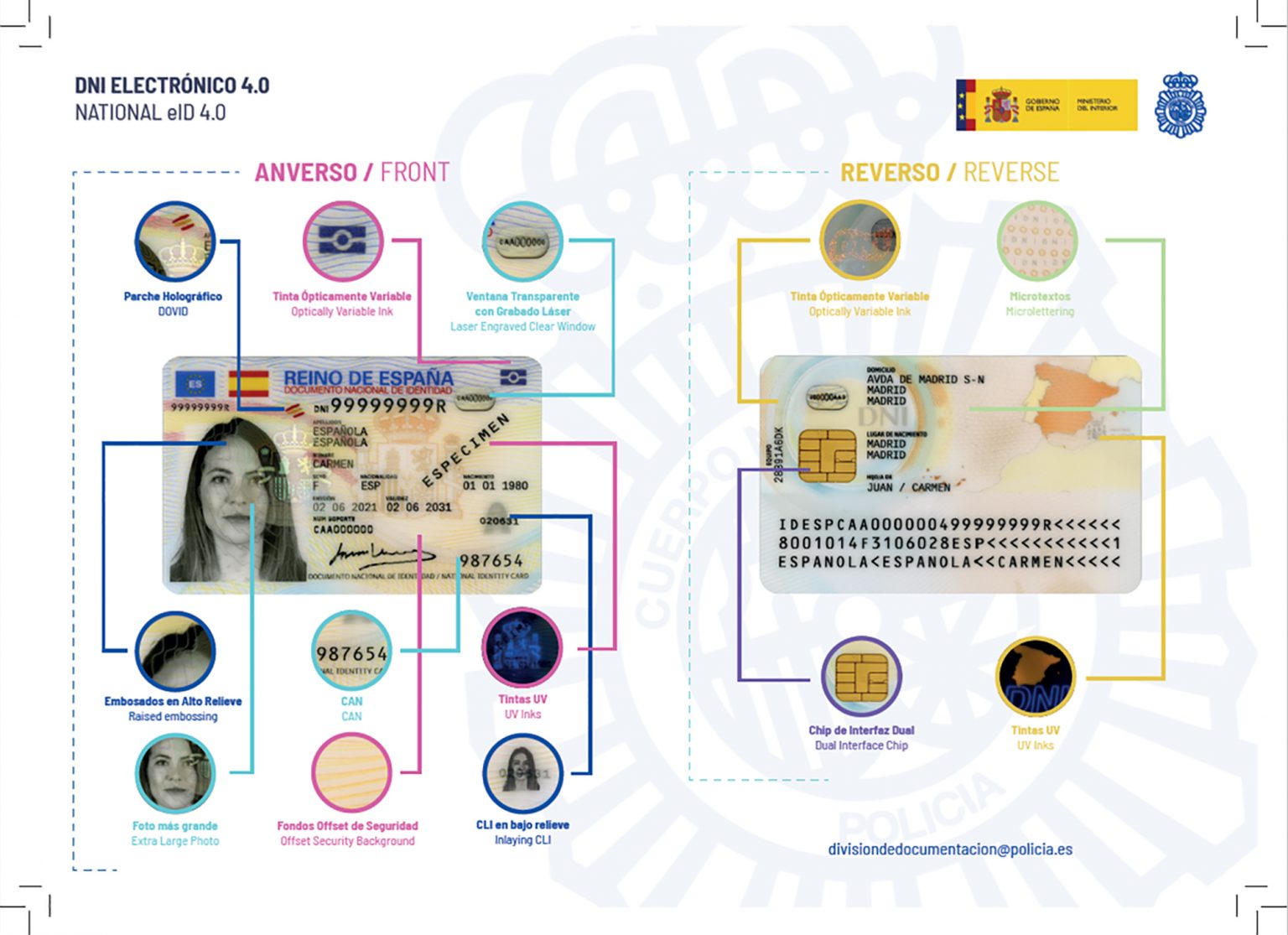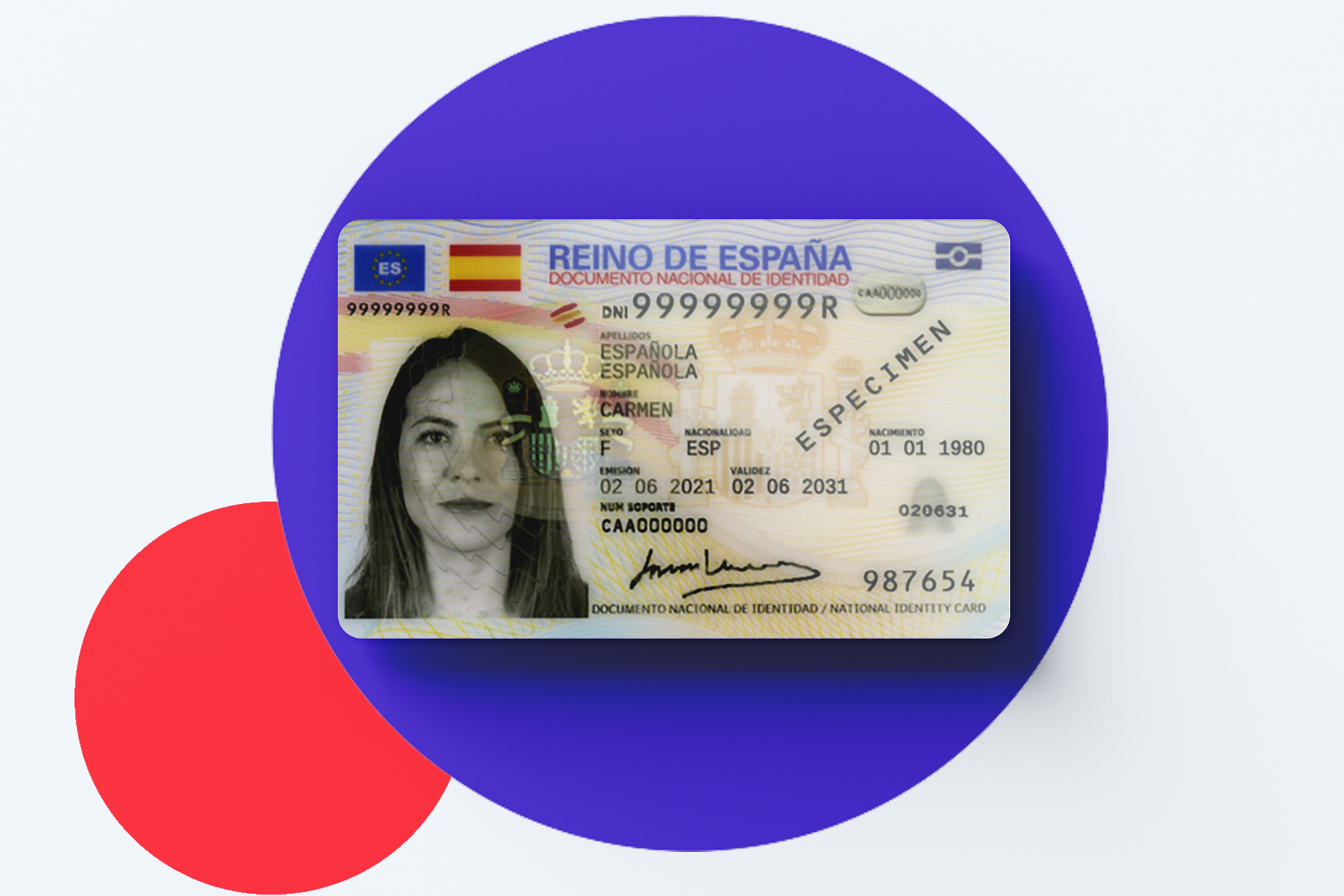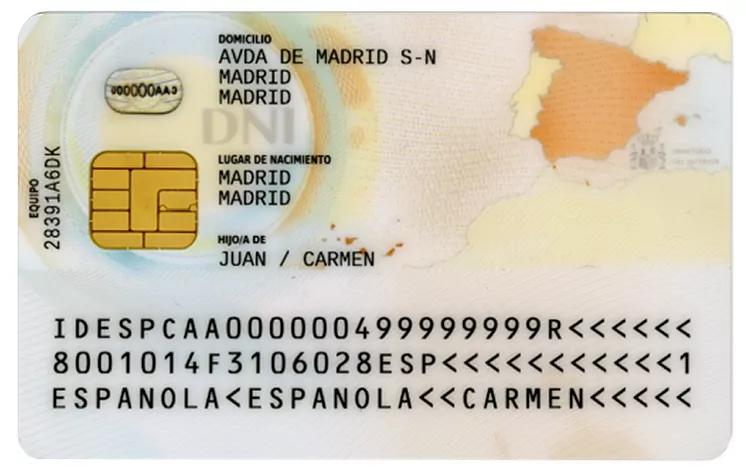On 2 June we said goodbye to the old Spanish National ID card to welcome a new document with lots of new features: The new DNI 4.0, which adds additional security measures to comply with the EU Regulation 2019/1157 of the European Parliament and of the council of 20 June 2019.
All EU member states will have to include it from 2 August 2021 to comply with the Regulation.
This new European identity document format, which aims to unify the documents of the member countries in order to standardise their appearance and functions, is under the framework of the DNIE Digital Identity Programme of the Spanish national police, and is financed with funds from the European Union through the Recovery, Transformation and Resilience Plan of the Government of Spain.
What’s new in DNI 4.0?
As a major novelty, the DNI 4.0 will be carried digitally on each citizen’s own mobile device, as is already the case with the driving licence. This will be possible through a free Europe-wide App currently under development that will allow citizens to use the digital signature from their mobile device.
This new DNI is fully equipped with technology, incorporating a new microchip capable of storing the citizen’s signature, facial image and two fingerprints, as well as authentication certificates and their electronic signature. Children under the age of 12 may be exempt from the obligation to provide fingerprints, while children under the age of 6 will be exempt.
In terms of physical appearance, the new documents will follow the ID-1 format maintaining the document dimensions (85.60 x 53.89 mm).
Following European regulations, the new DNI will be bilingual, including the denomination of the document in two languages, English “National Identity Card” next to “Documento Nacional de Identidad” (Spanish)
Some data that appear in the document have been changed, like the identity number, which has been moved to the top centre of the document.
The two-letter code “ES” is also added inside a blue rectangle and surrounded by 12 yellow stars, denoting the country the document belongs to, in this case the Kingdom of Spain.
Security measures of the new Spanish DNI 4.0
The new ID card has visible and invisible security measures in addition to the microchip to fight against cyber criminals and prevent identity fraud or terrorist activities

Validity and renewal of the DNI
The validity of the new ID cards will be from a minimum of 5 years to a maximum of 10 years, with the exception that states may set a different period for citizens under 10 years old and those over 70 years old.
For old documents, the deadline for expiry is 3 August 2031.
The validity of the new identity documents will be from a minimum of 5 years to a maximum of 10 years.
Types of Spanish National ID Cards
Right now in Spain there are different types of legally valid DNI. Click on the link and find out more about the types of DNI in Spain, how they have evolved over time and understand the meaning of their fields.
We have highly specialised technology focused on reading (OCR, NFC) and validation of any type of ID document (ID cards, passports or driver licence) through deep learning. We can scan, validate and prevent fraud by also verifying the owner of the ID card with facial recognition.
If you are interested in our technology do not hesitate to contact us, and if you liked the article, share it and add value to your followers!

I’m a Software Engineer with a passion for Marketing, Communication, and helping companies expand internationally—areas I’m currently focused on as CMO at Mobbeel. I’m a mix of many things, some good, some not so much… perfectly imperfect.

PRODUCT BROCHURE
Discover our identity verification solution
Verify your customers’ identities in seconds through ID document scanning and validation, and facial biometric matching with liveness detection.





